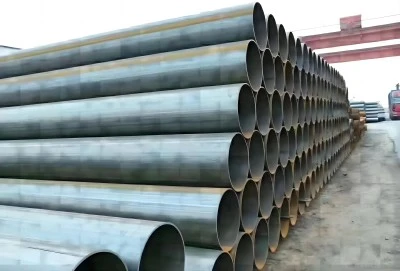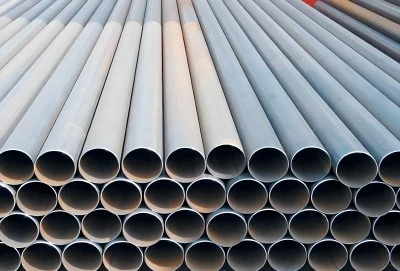EN10210 pipes are crucial components in various industrial applications, adhering to stringent technical requirements and implementation standards. These hot-finished seamless and welded structural steel hollow sections play a vital role in construction load-bearing applications. Understanding the EN10210 standard is essential for pipeline engineers, project managers, and equipment specialists working in oil and gas transportation, water supply systems, and offshore platform construction. This comprehensive guide delves into the chemical composition, mechanical properties, and quality control measures that ensure pipes meet the highest industry standards.
|
|
|
EN10210 Chemical Composition: What You Need to Know
Key Elements in EN10210 Steel Pipe Composition
The chemical composition of EN10210 steel pipes is a critical factor in determining their performance and durability. These pipes are primarily composed of carbon, manganese, silicon, and other alloying elements. The precise balance of these components is crucial for achieving the desired mechanical properties and corrosion resistance.
Carbon content in EN10210 pipes typically ranges from 0.20% to 0.22%, depending on the specific grade. This element plays a pivotal role in determining the steel's strength and hardness. Manganese, usually present in amounts between 1.40% and 1.60%, enhances the pipe's tensile strength and wear resistance. Silicon, typically around 0.55%, improves the deoxidation process during steel production.
Impact of Chemical Makeup on Pipe Performance
The carefully controlled chemical composition of EN10210 pipes directly influences their performance in demanding industrial environments. For instance, the presence of chromium and nickel in certain grades enhances corrosion resistance, making these pipes suitable for offshore applications or chemical processing plants. Sulfur and phosphorus content is strictly limited to minimize the risk of hot shortness and improve weldability.
The balance of alloying elements also affects the pipe's response to heat treatment, which is crucial for achieving the required mechanical properties. For example, molybdenum content can improve the steel's hardenability and high-temperature strength, making it suitable for applications in extreme environments.
Ensuring Compliance: EN10210 Composition Testing
To guarantee that EN10210 pipes meet the specified chemical composition requirements, rigorous testing procedures are implemented. These tests typically involve spectrographic analysis or wet chemical methods to accurately determine the percentage of each element present in the steel.
Manufacturers must provide a chemical analysis certificate for each heat of steel used in pipe production. This documentation ensures traceability and confirms that the pipes comply with the EN10210 standard's compositional requirements. Regular audits and third-party inspections further validate the accuracy of these tests, providing customers with confidence in the quality and consistency of EN10210 pipes.
Mechanical Properties: Decoding EN10210 Specifications
Tensile Strength and Yield Strength RequirementsEN10210 steel pipes must meet specific tensile and yield strength requirements to ensure their suitability for structural applications. The standard defines minimum values for both properties, which vary depending on the steel grade and pipe dimensions. For example, S355 grade pipes typically have a minimum yield strength of 355 MPa and a tensile strength range of 470-630 MPa.
These strength parameters are crucial for engineers designing structures or pipelines using EN10210 pipes. The yield strength determines the pipe's ability to withstand loads without permanent deformation, while the tensile strength indicates its ultimate load-bearing capacity before failure. Regular testing, including tensile tests on samples taken from production batches, ensures consistent compliance with these specifications.
Ductility and Elongation: EN10210 Standards
Ductility, measured through elongation tests, is another critical mechanical property specified in the EN10210 standard. This characteristic indicates the pipe's ability to deform plastically without fracture, which is essential for applications involving bending or forming operations. The standard typically requires a minimum elongation percentage, often around 20-22%, depending on the steel grade and pipe dimensions.
The elongation value is determined through standardized tensile tests, where a sample of the pipe material is stretched until failure. This test not only provides elongation data but also helps verify the tensile strength and yield point of the material. EN10210 pipes with good ductility offer improved workability and resistance to brittle fracture, enhancing their overall performance and safety in various applications.
Impact Resistance in EN10210 Steel Pipes
Impact resistance is a crucial property for EN10210 pipes, especially those used in low-temperature environments or applications subject to sudden loads. The Charpy V-notch impact test is commonly used to assess this property. The standard specifies minimum impact energy values at specific temperatures, typically ranging from 27 to 40 Joules, depending on the steel grade and intended use.
For instance, pipes destined for offshore platforms or arctic pipelines may require higher impact resistance to withstand harsh environmental conditions. The impact test results provide valuable information about the pipe's toughness and its ability to resist crack propagation under dynamic loading conditions. This property is particularly important for ensuring the safety and reliability of structures built with EN10210 pipes in challenging environments.
Quality Control: EN10210 Testing and Inspection Procedures
Non-Destructive Testing Methods for EN10210 PipesQuality control for EN10210 pipes involves a range of non-destructive testing (NDT) methods to ensure structural integrity without compromising the pipe's usability. Ultrasonic testing is widely used to detect internal flaws, such as inclusions or laminations, that might not be visible on the surface. This method uses high-frequency sound waves to create detailed images of the pipe's internal structure.
Magnetic particle inspection is another common NDT technique, particularly effective for detecting surface and near-surface defects in ferromagnetic materials. For welded EN10210 pipes, radiographic testing may be employed to examine weld quality, using X-rays or gamma rays to create images of the weld's internal structure. These comprehensive NDT procedures help maintain the high quality standards required for EN10210 pipes across various industrial applications.
Hydrostatic Pressure Tests: Ensuring Pipe Integrity
Hydrostatic pressure testing is a crucial step in validating the integrity of EN10210 pipes. This test involves filling the pipe with water and pressurizing it to a level significantly above its normal operating pressure, typically 1.5 times the design pressure. The pipe is held at this pressure for a specified duration, usually several hours, to check for leaks or deformations.
During the test, technicians carefully monitor the pressure gauge for any drops in pressure, which could indicate a leak. They also visually inspect the pipe for signs of bulging or other deformations. Successful completion of the hydrostatic test provides confidence in the pipe's ability to withstand operational pressures and resist leakage, which is particularly critical for applications in oil and gas transportation or high-pressure water systems.
Documentation and Certification for EN10210 Compliance
Comprehensive documentation is essential for verifying EN10210 compliance. Manufacturers must provide detailed certificates that include information on chemical composition, mechanical properties, and the results of all required tests. These documents typically include a 3.1 certificate according to EN 10204, which provides specific inspection results for the delivered products.
The documentation package often includes material test reports, dimensional inspection records, and NDT results. For critical applications, additional third-party inspection and certification may be required. This rigorous documentation process ensures traceability and provides end-users with the assurance that the EN10210 pipes meet all specified requirements, facilitating their use in demanding industrial and construction projects worldwide.
EN10210 steel pipes stand as a testament to engineering excellence, meeting rigorous standards in chemical composition, mechanical properties, and quality control. For professionals in pipeline engineering, project procurement, and plant equipment management, understanding these technical requirements is crucial. The comprehensive testing and inspection procedures ensure that EN10210 pipes deliver exceptional performance in diverse applications, from oil and gas transportation to offshore platform construction. By adhering to these stringent standards, EN10210 pipes continue to play a vital role in global infrastructure development, offering reliability, durability, and safety across various industrial sectors.
EN10210 Steel Pipes For Sale
For high-quality EN10210 steel pipes that meet all technical requirements and implementation standards, look no further than Hebei Longma Group. Our state-of-the-art production facilities, imported from Germany and complemented by our independently developed equipment, ensure top-notch quality. With a professional team of over 300 employees, including 60+ technical experts, we guarantee expertise in every aspect of pipe manufacturing. Our comprehensive testing facilities, including ultrasonic flaw detectors and industrial X-ray systems, ensure rigorous quality control. We pride ourselves on fast delivery, with standard thickness pipes ready in as little as 7 days. Backed by complete certifications including API 5L, ISO 9001, and ISO 14001, we offer competitive pricing thanks to our integrated production model and strong raw material partnerships. For all your EN10210 pipe needs, contact us at info@longma-group.com.














